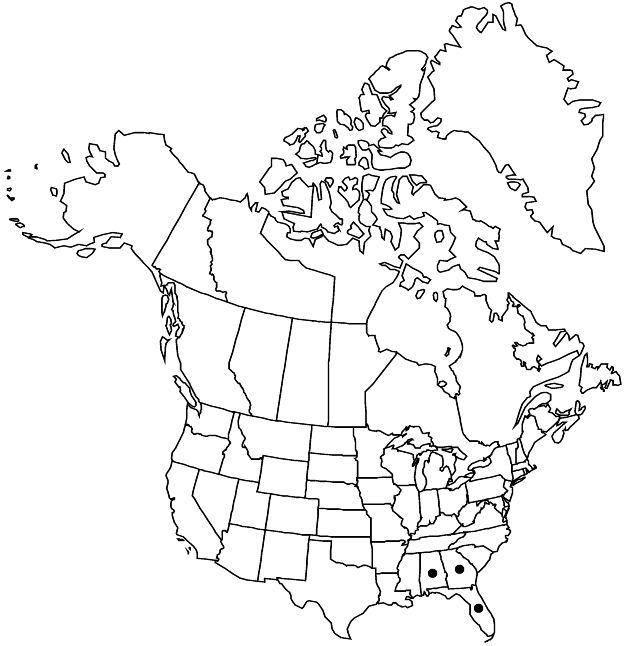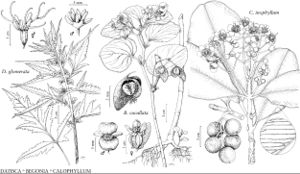Begonia cucullata
Sp. Pl. 4: 414. 1805.
Plants perennial (rhizomatous), usually glabrous, sometimes sparsely hairy. Stems [10–] 30–70 [–100] cm. Leaves: stipules lanceolate to oblong, 7–19 × 3–6 mm; petiole 5–46 mm, glabrous; blade asymmetric, ovate to ± reniform, (28–) 46–72 [–80] × (28–) 33–85 mm, base cuneate on shorter side, usually rounded on longer one, margins not lobed, crenate, teeth apices setose, otherwise eciliate, apex obtuse, surfaces glabrous (or glabrate to sparsely hairy in Alabama specimens). Peduncles 22–75 mm (in fruit); bracts lanceolate to ovate. Flowers white to pink; staminate: tepals 4, outer 2 (sepals) suborbiculate or reniform, 7–10 mm, inner 2 (petals) narrowly obovate, 5–7 mm; stamens 24–33; pistillate: tepals 4 or 5, obovate, 6–9 mm. Capsules 8–15 × 6–12 mm, larger wings deltate-rounded, 10–17 mm wide, smaller 3.5–5 mm wide. 2n = 34, 56 (South America).
Phenology: Flowering spring.
Habitat: Along streams in swamps, floodplain woodlands, cabbage palmetto hummocks, wet ditches, wet and mucky soil, often in shade
Elevation: 0–10 m
Distribution

Introduced; Ala., Fla., Ga., South America
Discussion
Begonia cucullata is found throughout Florida and recently has been collected in nearby Alabama (Conecuh County). The Alabama plants are typical of this species except that the leaves and petioles are glabrate to sparsely hairy; it may require further study. The distinction between varieties is not always clear (B. G. Schubert 1954) and they are not recognized here. Florida specimens often are treated as var. hookeri (de Candolle) L. B. Smith & B. G. Schubert, a name that has been put in synonymy of var. cucullata (L. B. Smith et al. 1986). From the morphologic variation observed, it is possible that this species escaped repeatedly from cultivation. It appears to be able to produce abundant seeds; capsules are regularly found on specimens and sometimes are abundant. Known horticulturally as B. semperflorens, B. cucullata has played an important role in ornamental horticulture.
